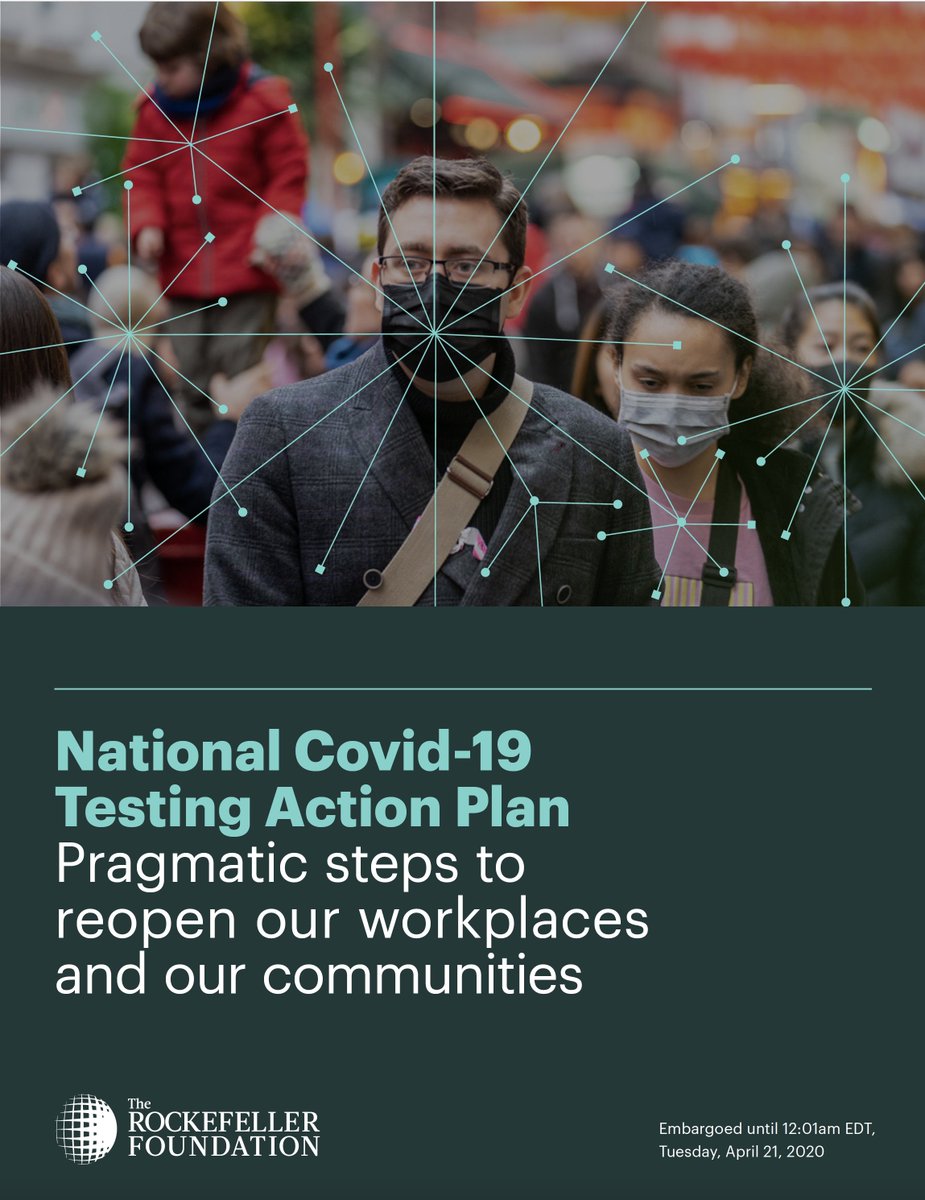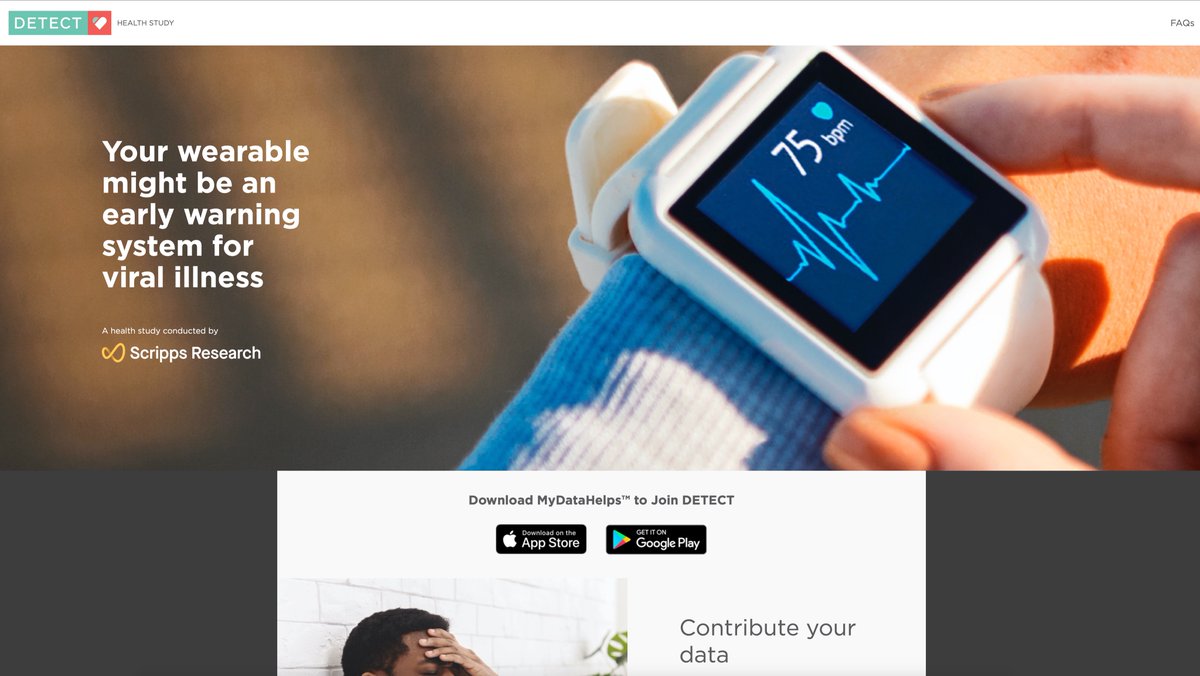1. Some hard facts to explain why
Testing, testing, testing is not enough
In our @RockefellerFdn action plan we called for 35 million tests/week, scaling up over the next 6 months https://www.rockefellerfoundation.org/national-covid-19-testing-action-plan/">https://www.rockefellerfoundation.org/national-... Others have called for 35 million/day
Testing, testing, testing is not enough
In our @RockefellerFdn action plan we called for 35 million tests/week, scaling up over the next 6 months https://www.rockefellerfoundation.org/national-covid-19-testing-action-plan/">https://www.rockefellerfoundation.org/national-... Others have called for 35 million/day
2. We need a massive number of tests now, daily, but it has taken the US several weeks just to get to <5 million total. Even with the recruitment of academic & industry labs (as we advocated), it& #39;ll take time & the big N of tests, while desirable, are ambitious, to say the least.
3. Besides practical limitations of doing tests for >330 million people, once is not enough. A negative test could turn positive the next day. There is a major issue still w/ false negatives. Testing every week (or more frequent) would be ideal, but that& #39;s even more impractical.
4. Relying on the serology tests sets up other problems. There is a significant false positive rate and lack of validation of any at scale, especially in populations w/ low infection rates.
Moreover, we don& #39;t know if IgG antibody protects: (1)against spread and (2) for how long?
Moreover, we don& #39;t know if IgG antibody protects: (1)against spread and (2) for how long?
5. So now test, test, test has some holes. We desperately need to do them but can& #39;t do them at the scale or frequency we need for the US population and geography; the accuracy can& #39;t be fully relied upon. The virus test is a one-off assessment. How can we be smarter about this?
6. We need massive, passive, cheap, continuous surveillance for risk.
We& #39;ve seen promise w/ a smart thermometer ( @Kinsa) but that requires taking one& #39;s temperature a couple of times a day.
There are >100 million Americans w/a smartwatch or wristband that gets resting heart rate.
We& #39;ve seen promise w/ a smart thermometer ( @Kinsa) but that requires taking one& #39;s temperature a couple of times a day.
There are >100 million Americans w/a smartwatch or wristband that gets resting heart rate.
7. A rise in resting heart rate antedates fever; we& #39;ve published on its ability to predict flu:
https://www.thelancet.com/journals/landig/article/PIIS2589-7500(19)30222-5/fulltext
Germany">https://www.thelancet.com/journals/... ( @rki_de) used that to design a smartwatch app for heart rate now used for >300,000 citizens for #COVID19 surveillance
https://www.thelancet.com/journals/landig/article/PIIS2589-7500(19)30222-5/fulltext
Germany">https://www.thelancet.com/journals/... ( @rki_de) used that to design a smartwatch app for heart rate now used for >300,000 citizens for #COVID19 surveillance
8. We have no national #COVID19 plan. If we did, we& #39;d have a digital surveillance strategy, as reviewed @RockefellerFdn report. In the meantime, you are welcome to join >12,000 Americans enrolled in @detect_study to donate your heart rate data. Spread the word, not the virus.  https://abs.twimg.com/emoji/v2/... draggable="false" alt="🙏" title="Folded hands" aria-label="Emoji: Folded hands">
https://abs.twimg.com/emoji/v2/... draggable="false" alt="🙏" title="Folded hands" aria-label="Emoji: Folded hands">

 Read on Twitter
Read on Twitter
 " title="8. We have no national #COVID19 plan. If we did, we& #39;d have a digital surveillance strategy, as reviewed @RockefellerFdn report. In the meantime, you are welcome to join >12,000 Americans enrolled in @detect_study to donate your heart rate data. Spread the word, not the virus. https://abs.twimg.com/emoji/v2/... draggable="false" alt="🙏" title="Folded hands" aria-label="Emoji: Folded hands">" class="img-responsive" style="max-width:100%;"/>
" title="8. We have no national #COVID19 plan. If we did, we& #39;d have a digital surveillance strategy, as reviewed @RockefellerFdn report. In the meantime, you are welcome to join >12,000 Americans enrolled in @detect_study to donate your heart rate data. Spread the word, not the virus. https://abs.twimg.com/emoji/v2/... draggable="false" alt="🙏" title="Folded hands" aria-label="Emoji: Folded hands">" class="img-responsive" style="max-width:100%;"/>


